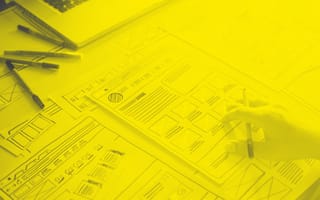In the past few years, we’ve been witnessing a rapid acceleration in innovation and new technologies. This process is fed by a virtuous cycle of new solutions and products influencing one another and improving other technologies that we then use to create more and more innovation, and so on. It’s exponential growth, very much like the kind described by Moore’s law. Though Moore’s law explicitly refers to computing power, we can, to a certain extent, apply it to UX as well. New technologies breed new products. New products create new scenarios and use cases, and shape society (think about how Airbnb or Tinder changed the way we live specific moments of our lives). Those societal changes create new needs, new pain points and new opportunities. Soon, UX designers will have to grapple with these fast-paced changes in our world.
Until the relatively recent past, our technology lived in a vacuum. If you’re old enough to remember, even our computers stood alone. Each device had its own life, its own goals, and didn’t care about its surroundings. Today, I can control my washing machine with my smartphone.
But controlling my washing machine from my smartphone perfectly encapsulates the gimmicky moment we’re living in now. Companies can get distracted with the glimmer of new possibilities without thinking about purpose and functionality. In the near-future, UX designers must steer the ship and make sense of what opportunities will actually improve our lives. The motto “just because you can do it doesn’t mean you should” is more relevant now than ever and will only become more crucial as the opportunities continue to expand infinitely.
When conversation between machines meaningfully serves the user — rather than a marketing directive — it is not just fascinating but desirable. In the future of UX, we’ll need to be able to think about how a user can move fluidly between devices when designing experiences, and not just devices pertaining to the user’s private (or family shared) ecosystem, but on an urban scale, especially with the advent of 5G.
For the entire existence of the smartphone, we’ve kept adding new functionalities, making it the enabler of almost anything. Maybe we’ll need to move to a different approach where we let each device do what it does better. Jumping from one to the other must become as effortless as going from one app to another. Designing experiences that work in silos won’t be enough anymore; whatever product you design, you’ll need to shape it around a truly cross-device experience.
The natural consequence will be (it already is) a lot of questions regarding how to manage privacy issues. In this amazingly seamless work, I want to jump on a plane and find my Spotify, Netflix, and Google Stadia accounts logged in as soon as I take my seat. But I also want to be sure these services log out and forget all of my data as soon as I reach my destination. Last year, a smart TV in my Swedish hotel room offered me the possibility of connecting my streaming services, with quick access to a button for wiping my data off the system quickly. It was nice but still very manual as UX, as I had to input a user name and a password for each single service (with a daunting interaction via the remote) and then remember to log out when leaving the room. In a very near future, I expect the TV to immediately prompt me with the possibility of accessing all of my services using a biometric recognition system available through my phone (or smartwatch). When I leave the room, I expect it to automatically log me out, based on the fact that the logging device is not nearby anymore.
Artificial intelligence will play a big role in this new hyper-connected universe. By AI, I don’t mean colorful blobs speaking in suave voices — the best manifestation of artificial intelligence is subtle and contextual. It’ll prompt the user with relevant suggestions of actions to take based on the moment, location, user habits and more. It’s my smartwatch (or another device) reminding me that it’s time to leave because I have a dentist appointment, getting into the car (pre-cooled/heated according to my preferences and based on my distance from the vehicle), finding the destination already set and, in a smart-city scenario, having a parking spot reserved and paid for as I approach my point of arrival. No gimmick, just life made more comfortable and more streamlined. The situation described is already happening in some form. But we’ll strive to get to a place where you won’t have to think about or plan around the system, it will already know what you need.
To go back to my “smart” washing machine, I expect to see all of my appliances talking to each other in a meaningful way, so that I will get a message on my fridge or even my stove when the laundry is done. The appliance giving me the message will understand I’m in front of it at that moment.
It will be a concert of devices talking to each other, and the job of the UX designer for this very near future will be writing the symphony.
AI will not only help users, but also help automate the wire framing and pixel-pushing processes so important to current UX design. AI will take care of the dirty job, and UX designers will need to embrace their strategic side. We’ll need to spend less time worrying about the contrast in buttons and texts — which can be automated — and care more about what new technology out there is relevant to each moment of the user journey.





